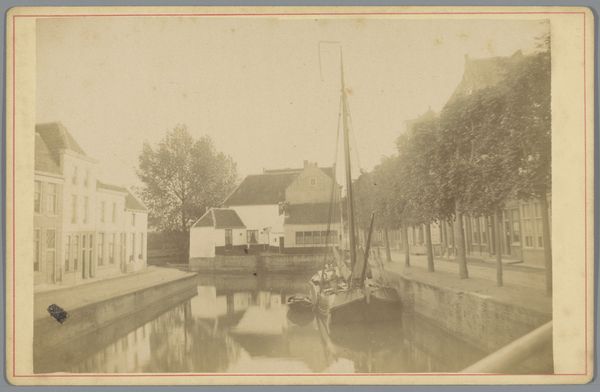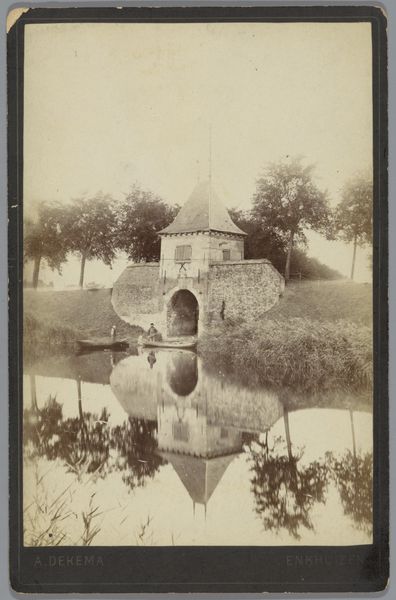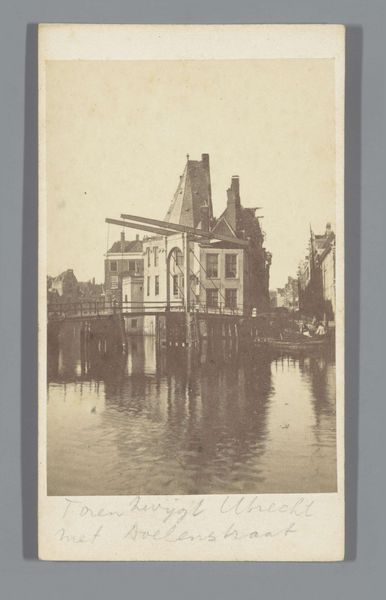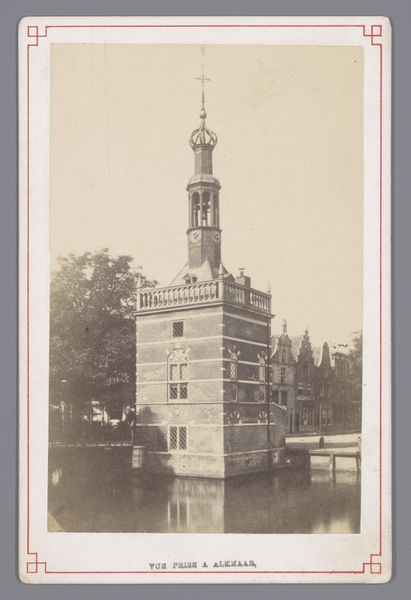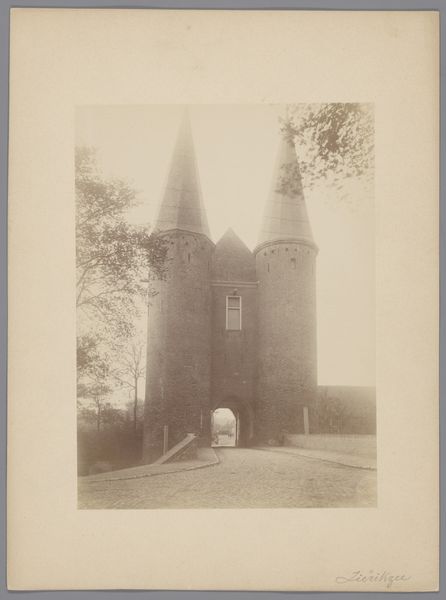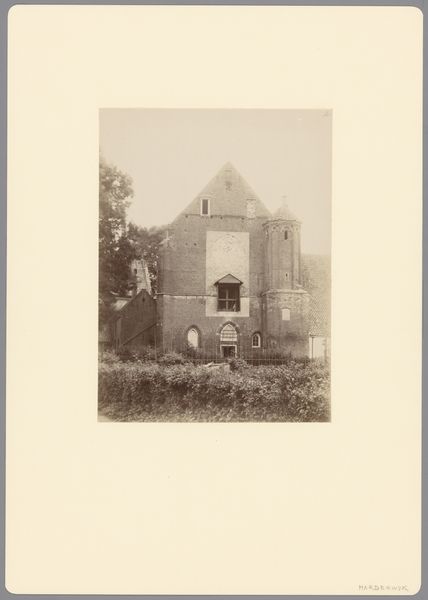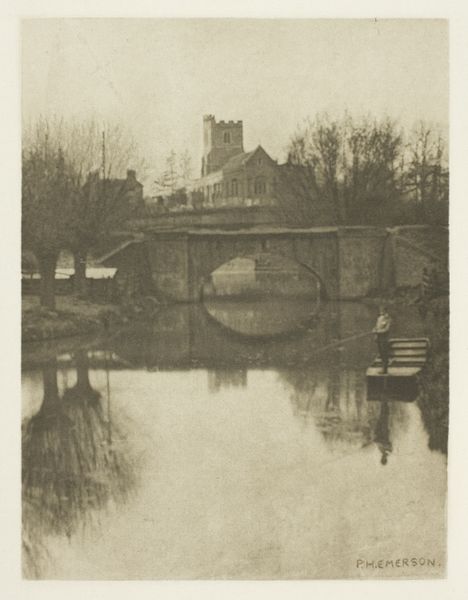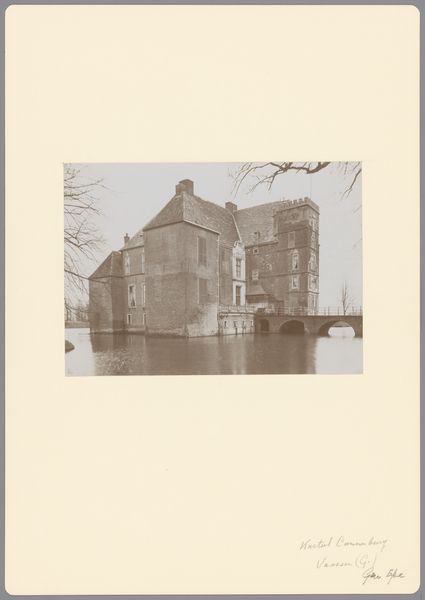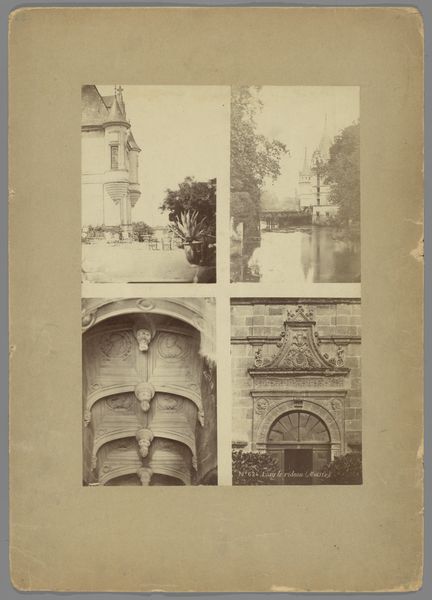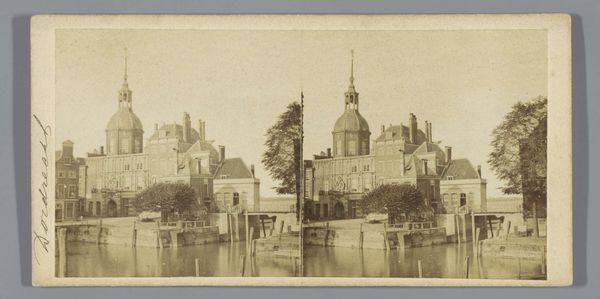
photography
landscape
photography
cityscape
realism
Dimensions height 168 mm, width 109 mm
Curator: A still moment captured in time, isn't it? What feelings arise for you when you view this early photograph? Editor: A sense of calm and reflection. The stillness of the water, perfectly mirroring the gatehouse. It’s like seeing two worlds in one frame. The reflections carry potent symbolism, particularly around the ideas of memory. Curator: Indeed. The Rijksmuseum holds this piece, entitled "Gezicht op de waterpoort de Oude Gouwsboom in Enkhuizen", which translates to "View of the Oude Gouwsboom Water Gate in Enkhuizen." It was taken by Albert Dekema sometime between 1865 and 1896. Notice how photography was capturing and shaping Dutch identity during that era, immortalizing its historic waterscapes like this gate. It's more than just an image; it’s a record of urban development, really. Editor: The gate itself certainly looms large, both physically and metaphorically. Gates often represent transitions, passages from one state to another. Here, coupled with the reflections, is this image inviting us to consider time passing or cycles repeating? And how the town continues around it? It really emphasizes ideas of journeys and protection. Curator: I agree wholeheartedly. Beyond its thematic strength, its function in that local moment fascinates me. Water gates controlled access and were critical for defense and trade. It represented the town's power and independence and of the rise of landscape photography, it allowed more public participation in these cultural conversations. Editor: The composition, almost symmetrical, emphasizes the strength and stability of the structure. It’s very classically composed but tinged with a more Romantic focus on mood, don’t you think? Even with the tonal constraints of the early photography. Curator: It balances nostalgia for the past with this modern need to show off new national icons. Dekema subtly asserts Dutch civic pride. Editor: An everyday scene rendered with this quiet formality encourages me to wonder, What did it mean to be Dutch, to belong, in this specific locale? The gate then functions almost as a historical marker, rooted deeply in collective identity. Curator: So, photography and the city gate end up acting together as symbols of the national Dutch spirit here. Very interesting, what a lens does for cultural pride! Editor: Absolutely. It adds layers to what at first appears a simple scenic image.
Comments
No comments
Be the first to comment and join the conversation on the ultimate creative platform.

